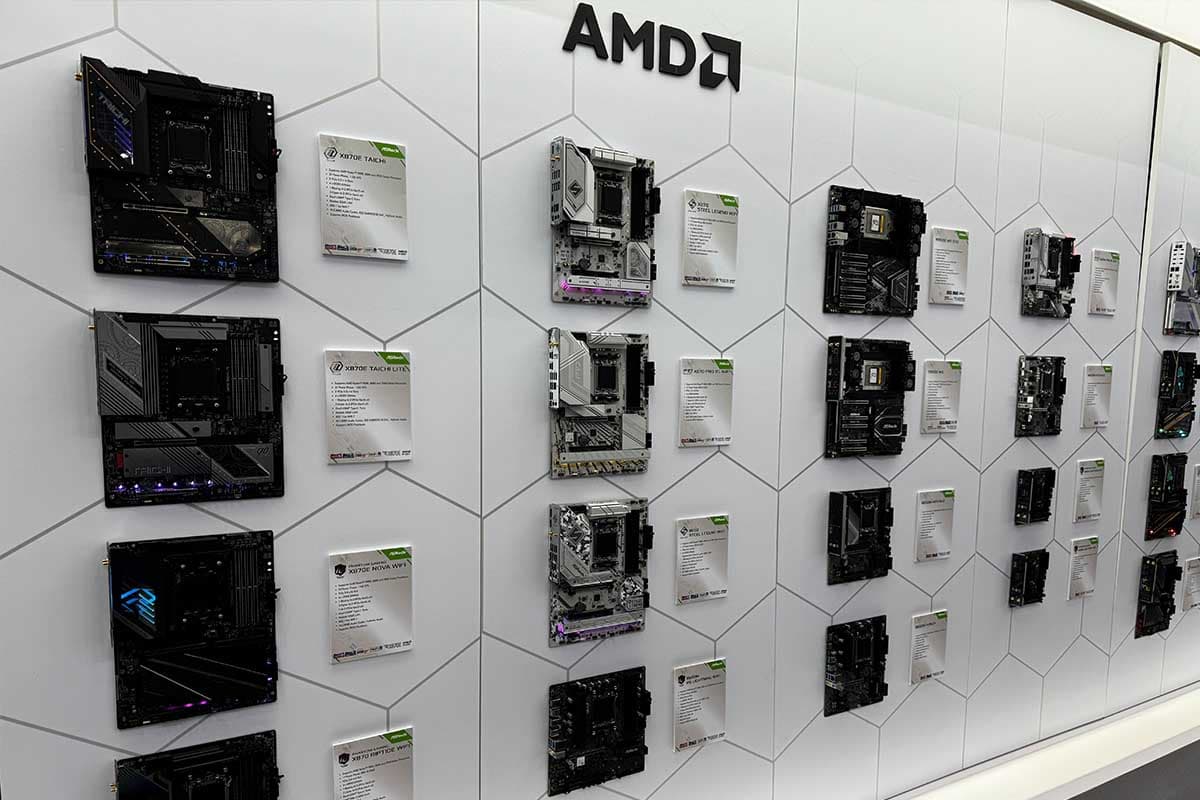ASRock puts its entire X870E and X870 collection for Ryzen 9000 CPUs on display

Table of Contents
ASRock has decided to bear all at Computex this year, showing all the X870E and X870 motherboards it plans to release accompanying the Ryzen 9000 series CPUs. There’s no official date yet, but it’s a safe bet considering every motherboard features out-of-the-box support for the new AMD CPUs. It’s not just the old designs that we’re used to either, six new designs are coming in the form of the Taichi, Taichi Lite, Nova WIFI, Riptide, Steel Legend & PRO RS series. Of course, all are led by the flagship Taichi.
ASRock has been somewhat of an underrated manufacturer in the past, at least in our opinion, but it’s looking like that might change this year. ASRock seems to have upped the ante in terms of dedication to its craft, and it’s not going unnoticed. With AM5 support going to 2027 and beyond, these new 800 series boards will be relevant for some time.
ASRock’s X870 motherboard lineup
These are all of the X870E and X870 motherboards on display by ASRock at Computex 2024.
X870E Tiachi

First up, we have the ASRock X870E Taichi. This is the flagship motherboard for the X870E line from ASRock that features a healthy 27-phase power delivery system, perfect for all you overclockers out there. The motherboard is, of course on the DDR5 standard, but what’s far from standard is the dual PCIe Gen 5 X16 slots the Taichi features. In terms of I/O, this motherboard comes packed with Gen 4 USB, 5GbE LAN, WIFI7, and more. If you need a lot of storage in your PC, you’ll be glad to note the four M.2 slots this motherboard has (1x Gen5 + 3x Gen4).
This is arguably the best-looking motherboard that ASRock has released to date, it has a mean and gritty aesthetic, without being so heavy as to look out of place in any build. It has plenty of RGB, notably on the I/O plate and at the bottom next to the second PCIe slot. All this pretty much comes at a price, however, and we expect this motherboard to exceed $500 when launched.
X870E Taichi LITE

If you still need the power of the Tiachi but can’t afford to shell out all that cash, then you might be interested in the Taichi LITE. This motherboard has the exact same specifications as the Tiachi, it just comes without the fancy RGB and accent plates. Something that may also interest you if you aren’t a fan of RGB from the get-go.
X870E NOVA WIFI

The ASRock NOVA WIFI is the top Phantom Gaming motherboard on display, it has an impressive arsenal of updated I/O just turned down a little from the specifications of the Taichi. The Phantom features a 23-phase power design, which is still nothing to be upset about. This motherboard only features a single PCIe Gen5 x16 slot, but SLI is pretty much dead anyway. What is different about the NOVA, is it’s 1 additional PCIe Gen3 M.2 slot, totaling 5 slots for M.2 drives, the configuration is the same as the Tiachi otherwise.
X870 Riptide WIFI

The X870 Riptide WIFI is the 2 of 2 Phantom Gaming motherboards that ASRock is offering up in this line, and it appears to be a stripped-down version of the NOVA. It features a 17-phase power design, a single PCIe Gen5 X16 slot, and only 3 M.2 slots (1x Gen5 + 2x Gen4). Of course, this board will aim to be more budget-friendly in the absence of more, higher-end parts.
X870 Steel Legend

The X870 Steel Legend is a more mainstream offering, targeted more toward the budget/average gamer. The specifications are almost identical to the Riptide model, but the white color scheme makes it seem somewhat more sophisticated and less “gamery” We can see this being the go-to motherboard of choice for the budget gamer, providing the price is right.
We couldn’t get a clear picture of the X870 Steel Legend, but it is among these motherboards.
X870 PRO RS WIFI

Finally, we have the second white motherboard on the list, and possibly the most budget option, the X870 PRO RS WIFI. The specifications are again similar to the Riptide, but the PRO only has 3 M.2 slots, and are configured as one of each, so 1x Gen5, 1x Gen4, and 1x Gen3. Everything else appears to be similar. We will likely see this motherboard come in at around $220 when it launches.
We again couldn’t get a clear picture of the X870 PRO RS, but it is among these motherboards.
What happened to X770?
Some of you may be confused as to where the next logical step in motherboard progression went, the X770 series. We have a theory, but without confirmation from AMD themselves, that’s all it will ever be – and previous rumors also predicted this. Intel released a second LGA 1700 motherboard generation, the 700 series back in October 2023. AMD didn’t respond to this then, as AM5 was and still is adequate for the hardware AMD has on the market.
Now that AMD is releasing new chips, and Intel is progressing onto the 800 series of motherboards themselves, AMD does not want it to look like its product is inferior. So, AMD skipped the 700 series to release the 800 series, putting them on par with Intel. We all associate higher numbers with being better, well, in PC and Tech cases anyway. This was likely done to avoid the perception that AMD might be less powerful or less advanced than Intel, which we know isn’t the case at all.
